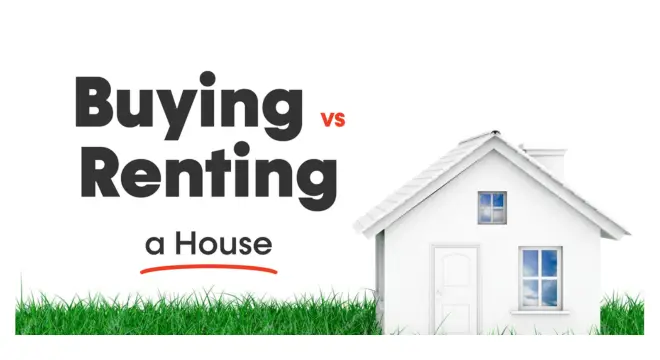Akron Struggles to Balance Homeless Cleanup and Support for Displaced Residents
When I first heard that Akron had cleared out yet another homeless encampment, I didn’t just see a news headline—I saw lives being upended. Dozens of people who had built something resembling safety, even if it was under tarps and tents, were told to move. Again. With nowhere to go.
And this isn’t just about one corner of the city or a handful of makeshift shelters. It’s about how we, as a community, respond when people at their lowest get swept aside—literally. On paper, it was a “clean-up operation.” But if you talked to anyone who lived there, like Nessa or her partner, it felt more like being erased.
Akron isn’t the only city doing this, but the ripple effect of these sweeps is deeply personal. People lose medications, ID cards, warm clothes—everything. And they’re left to figure it all out on the street. Again. The city says it’s about safety and complaints. Residents say it’s about survival.
If you’ve ever wondered what it really looks like when a city forces its unhoused residents to disappear, this is it. And if we’re not asking what comes next for them, we’re missing the entire point.
Now you tell me—what should a city actually do when people have nowhere else to go?
Background — Understanding Akron’s Homelessness Landscape
To understand why people ended up living in tents on city-owned land, you have to look at the bigger picture. Homelessness in Akron didn’t appear overnight. It’s been building for years—through rising rent, untreated mental health issues, job loss, and a severe shortage of affordable housing.
Back in 2017, there was a place called Second Chance Village. It was more than just a tent community. It had structure. It had rules. It had hope. That camp was started by activist Sage Lewis and, for a while, gave dozens of people a safer alternative to the streets. But even that was eventually shut down by the city due to zoning laws and legal pressure.
Fast forward to today—encampments are popping up again. And the city is responding the same way: with sweeps. According to a report from Signal Akron, Akron’s homeless population isn’t just growing—it’s undercounted and under-supported. In January 2024, outreach groups estimated at least 250 unhoused individuals living outdoors, with more who aren’t even on the radar.
This isn’t just a “homeless problem.” It’s a broken system problem. And unless that gets addressed, people will keep falling through.
The Sweep — What Happened and Why

On May 28th, the city of Akron cleared out an encampment near the Innerbelt highway after receiving multiple complaints. Officials cited health concerns, fire hazards, and safety risks. Residents were told to pack up and leave. If they didn’t, their belongings would be thrown away.
But when you hear it from the people living there, it’s a different story. One woman, Nessa, said she and her partner were left scrambling. “We don’t have anywhere else to go,” she told reporters. Many had been there for months. Some had jobs. A few even had tents with solar panels and makeshift kitchens. Then it was gone—just like that.
According to News 5 Cleveland’s coverage, the city did offer shelter referrals and said outreach teams were on-site. But several people said the shelters weren’t safe or had no space. Others simply weren’t ready to go into crowded, high-surveillance environments. So they walked away. Some into woods. Some into downtown streets.
And here’s the part that sticks with me: many of them were already on a waitlist for housing. They weren’t ignoring the system—they were stuck in it. The sweep didn’t move them forward. It just moved them.
Voices from the Ground — Stories of Displaced Individuals
If you really want to understand what these sweeps do, don’t look at official press releases. Listen to the people who were forced to leave.
Nessa and her partner had been living at the encampment for weeks. They had a tent, some storage tubs, and a tiny camping stove. It wasn’t much—but it was theirs. “We don’t have anywhere else to go,” she said, her voice shaking. “And the shelters aren’t safe.”
There are real reasons people avoid shelters: theft, assault, lack of privacy, rules that separate couples, or kick you out during the day. So instead, people build what they can on the land available to them—until it’s taken away.
You can feel the weight of this in a viral Instagram reel filmed right after the sweep. In the video, you see residents packing bags, some crying, others just sitting in shock. These aren’t criminals. They’re your neighbors, co-workers, veterans, even folks with part-time jobs. People who simply can’t afford rent.
View this post on Instagram
And this isn’t just about losing a tent. It’s losing community. Routine, safety. Even identity. People go missing after sweeps—not because they want to disappear, but because society lets them.
A few local mutual aid groups have been sharing real-time updates, video reels, and resources through closed community networks. Some of the most consistent info I’ve seen lately comes through WhatsApp broadcasts—it’s become a lifeline for people trying to help or stay informed quietly.
Policy and Legal Framework — The City’s Approach to Homelessness
One thing I’ve learned watching these sweeps play out is this: it’s not just about tents. It’s about laws, zoning codes, and how a city defines “public safety.”
In Akron’s case, the official explanation is always the same—“trespassing on city land,” “fire hazards,” or “public nuisance.” But the real issue runs deeper. The city doesn’t currently allow camping on public property, and there are no sanctioned spaces where people without homes are allowed to simply exist.
What’s worse? The enforcement is often inconsistent. In one case, people were given 24-hour notice. In another, there was no warning at all. Some had their belongings trashed—sleeping bags, IDs, even prescription meds—without a clear process to recover them.
According to a report from Ideastream Public Media, advocates are questioning whether Akron is even following its own policies. The report highlighted that the city hasn’t clearly defined how it conducts sweeps, how personal property should be handled, or what support is required to be in place before people are forced out.
From a legal standpoint, it’s murky. From a human standpoint, it’s devastating.
It’s not just the unhoused who feel the pressure of housing insecurity and urban tension—recently, a viral TikTok about “home invasion tactics” led to a deportation, sparking nationwide debates about personal safety, digital influence, and homeowner fear.
Comparative Analysis — Homeless Encampment Sweeps Nationwide
Akron isn’t alone. Cities across the U.S.—from Los Angeles to Denver to Portland—are doing the same thing: clearing encampments, often without long-term solutions in place.
Almost every city that relies on sweeps ends up with the same cycle. Tents go down. People scatter. Weeks later, new camps pop up somewhere else. Why? Because the root causes—lack of affordable housing, trauma, addiction, mental health issues—aren’t being solved. They’re being relocated.
Some cities are trying something different. Houston’s “housing-first” model helped reduce homelessness by 63% over the past decade. Instead of focusing on shelters or arrests, they gave people permanent housing—no strings attached—and paired it with case management and rehab access.
In contrast, cities like Akron keep cycling through temporary fixes. Tents go up. Police show up. Nothing really changes.
Health and Safety Implications — The Hidden Risks of Displacement

When you force someone to pack up their life in a matter of hours, you’re not just moving them—you’re putting their health at risk.
Let’s start with the basics. During sweeps like the one in Akron, people often lose medications, mobility aids, clean clothes, and even food. For someone managing diabetes, PTSD, or chronic pain, that can mean immediate danger. And it’s not just physical. The trauma of being uprooted—again—deepens stress, triggers relapses, and makes it even harder to access help.
Outreach workers across the country have seen this pattern: after a sweep, people disappear. Some go deeper into wooded areas where services can’t find them. Others give up on waiting lists or case management because they feel like the system keeps erasing their progress.
And let’s not ignore winter. In Ohio, exposure to cold is deadly. If someone loses a tent or blanket in a sweep and doesn’t find cover that same night, they’re at risk of frostbite or worse.
Have you seen similar sweeps happen in your city? Or been involved in outreach? Share your experience below—it matters more than you think.
Potential Solutions — What Can Actually Work
If Akron wants different results, it needs a different approach. Because right now, we’re treating the symptoms and ignoring the wound.
One proven model is “Housing First.” It’s exactly what it sounds like: get people into permanent housing before asking them to meet other conditions like sobriety or employment. This model has worked in cities like Houston, Salt Lake City, and even Columbus. People are more likely to recover, reconnect, and rebuild when they have a door they can lock at night.
We also need more low-barrier shelters—places where people can go without being split from their partner or service animal, and without a dozen intake rules. Outreach teams should be paired with mental health professionals, not just law enforcement. And the city should invest in legal encampment zones with sanitation and oversight—until permanent housing becomes a real option.
Even small changes help. Mobile hygiene units. Street medicine teams. ID replacement drives. These aren’t “radical ideas.” They’re survival tools.
I cover stories like this often—real issues, real voices, and real solutions. If that resonates, consider following for more.
Conclusion
If you’ve made it this far, I want to ask you something: What does it say about a city when it’s more prepared to remove tents than to provide homes?
This isn’t just about Akron. It’s about how every city, every neighbor, every one of us chooses to see unhoused people—as problems or as people. I’ve walked these camps. I’ve talked to the folks packing up their last pair of socks in a trash bag. They aren’t lazy. They aren’t broken. They’re trying to survive a system that wasn’t built with them in mind.
And until that system changes, encampments will keep popping up. Not because people want to live in tents—but because the alternative is sleeping on sidewalks, in alleys, under bridges… or dying in the cold.
We can’t sweep that reality away.
Disclaimer: This article is based on publicly available reports, firsthand accounts, and verified local sources. Situations involving homelessness and city policy may evolve over time. The intent is to inform and humanize, not to assign blame or promote any specific agenda.
⭐ Subscribe to Our Newsletter
Subscribe to the publishers newsletter to receive the latest news and updates directly in your inbox


